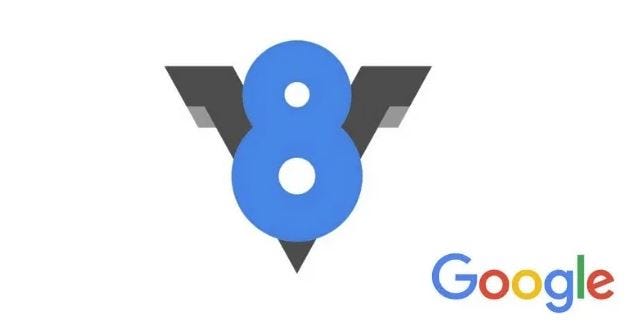Before this article, I mentioned to you that would start the articles series and create an Introduction. If you lost what I did, check it: Introduction — Understanding JavaScript API Requests and Responses in the Data Fetching lifecycle
There are differences between the JavaScript engine and the Browser engine in this article. In summary, the JavaScript engine executes JavaScript code, while the browser engine renders web pages and coordinates with the JavaScript engine to execute JavaScript code within a web browser.
I’m writing about the V8 JavaScript engine because is the most popular JavaScript engine and in comparison with other JavaScript engines there’s no single fastest JavaScript engine.
When you write JavaScript, you need to have in your mind that your code will be interpreted by a JavaScript engine in the browser such as V8 (Chromium-based browsers) as well as in server-side JavaScript platforms, such as Node.js., SpiderMonkey (Firefox), and others.
It takes the JavaScript code as input, parses it, and generates machine code or bytecode that can be executed by the computer’s processor. JavaScript engines are typically used in web browsers to execute JavaScript code on web pages, but they can also be used outside of the browser context in environments such as Node.js.
Learning what is an event-based platform, what is a thread vs a process, and how it works in practice gives you leverage to build highly scalable apps respecting the platform’s lifecycle.
Here are some details of V8 that developers should know about:
V8 is used in many popular applications: The V8 engine is used in many popular applications, including the Google Chrome browser, Node.js, and the Electron framework.
V8 is Cross-platform compatibility: V8 is designed to work on multiple platforms, including Windows, macOS, and Linux.
V8 supports multiple programming languages: Although V8 is primarily used to execute JavaScript code, it can also be used to execute other languages that can be compiled into machine code, such as TypeScript and Dart.
V8 has support for WebAssembly: V8 has built-in support for WebAssembly, a low-level bytecode format designed for executing code on the web. This support allows developers to run WebAssembly modules alongside JavaScript code in the same application.
Just-in-time compilation: V8 uses a just-in-time (JIT) compilation technique to optimize JavaScript code on-the-fly. This allows V8 to generate highly optimized machine code that can execute JavaScript code much faster than traditional interpreters.
*Memory management: *V8 employs a garbage collector to manage memory in JavaScript applications. The garbage collector automatically frees the memory that is no longer needed, which can help prevent memory leaks and improve application performance.
ECMAScript compatibility: V8 supports the latest ECMAScript (JavaScript) language specifications, including ECMAScript 2021. This means developers can use the latest JavaScript language features in their applications.
Debugging tools: V8 includes a robust set of debugging tools (Chrome DevTools) that allow developers to inspect and debug their JavaScript applications. These tools include a JavaScript debugger, a profiler, and a heap snapshot tool.
*Use the right data structures: *V8 is optimized for certain data structures, such as arrays and objects. When possible, use these data structures instead of custom data structures to improve performance.
Integration with Node.js: V8 is the default JavaScript engine used in Node.js, which is a popular server-side JavaScript runtime environment. This means that developers can use the same JavaScript code on the client and server sides of their applications, and benefit from the same high-performance optimizations provided by V8. If we compare Node.js with other competitors Deno uses V8 too, and Bun uses JavaScriptCore to execute JavaScript code.
How does the V8 JavaScript engine work?
The V8 JavaScript engine follows a sequence of steps to execute JavaScript code. Here’s an overview of the sequence of steps that V8 follows:
*Parsing: *The first step in executing JavaScript code is parsing. The V8 engine takes the JavaScript code as input and parses it into an abstract syntax tree (AST) that represents the structure of the code.
Compilation: Once the code has been parsed, the V8 engine compiles it into bytecode, a low-level representation of the code that can be executed more efficiently than the source code. V8 compiles the bytecode using a technique called Just-In-Time (JIT) compilation, which means that the compilation happens at runtime, just before the code is executed.
*Optimization: *After the code has been compiled, the V8 engine applies several optimization techniques to improve its performance. These optimizations include inlining functions, eliminating unused code, and using feedback from previous runs of the code to improve the generated machine code.
Execution: Finally, the V8 engine executes the compiled and optimized bytecode. During execution, the V8 engine uses a call stack to keep track of function calls and uses a garbage collector to manage memory allocation and deallocation.
Profiling: As the code is executed, the V8 engine collects profiling data that can be used to further optimize the code. This profiling data includes information about which functions are being called frequently and which functions are taking the most time to execute.
If JavaScript is single-threaded, how it works asynchronously?
Which means that it can only execute one task at a time. However, it can achieve asynchronous behavior using various techniques, including callbacks, promises, and async/await.
In all of these techniques, the single thread of execution is used to manage the event loop, which is responsible for queuing and executing asynchronous tasks. When an asynchronous task is started, it is added to the event loop, and when it is complete, the callback function or promise resolution is added to a task queue. The event loop then picks up these tasks and executes them when the thread is idle.
So, If you want to know more about callbacks, promises, and async/await, please wait for the next article that I’ll publish.
Thank you for reading, I hope this article can somehow have increased your knowledge base about it.







Top comments (0)